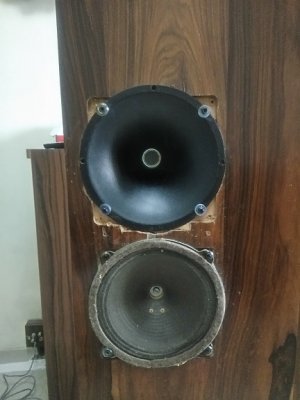You state "Each polarity consists of three leads in parallel, 12 AWG + 12 AWG + 14 AWG. ( equivalent AWG is 8 AWG , thus this configuration provides a superb transfer efficiency."5-18-22........................ DIY SPEAKER CABLES............................ ULTRA HIGH PERFORMANCE
The speaker cables that were made for Hari, in 2021, and were recently DIY built by Guderbrod Auidio, are made precisely as follows:
Wire: Military Specified m22759/11. This is multi stranded copper wire, silver plated, in a teflon outer jacket . Best source : APEX Jr. Surplus Electronics in California, USA. Steve is the shop owner - a good person !!
Configuration : Each polarity consists of three leads in parallel, 12 AWG + 12 AWG + 14 AWG. ( equivalent AWG is 8 AWG , thus this configuration provides a superb transfer efficiency. ) Terminate the ends into appropriate high quality spade terminals. Each polarity trio of 12 + 12 + 14, after spade lug termination, is twisted around each other, loosely - not tightly. Perhaps two inches per twist.
Lengths : Specifically cut the Mil Spec wire to two Robert Fulton wire lengths , or 57 1/8th inches times two, which is 114 1/4 inches. Do not cut amplifier-to-speaker leads shorter than two integrals, as this will sound worse.!!! Only if you absolutely require extra long leads, use three Fulton lengths. Cut the wires at 171 3/8ths inches long, all three per polarity equal in length.
114 1/4 inches is also best sounding length as a Power Cable, 12 AWG typically is used, with 20 A. IECs.
Implementation : Be absolutely sure, when in use, that the two twisted polarities do NOT ever touch each other, in their route from the amplifier to the speaker. Not even ONE time !!!! Do not lay wires on rugs, metal objects, or plastic surfaces, as it is a degrade in energy transmission.. It is best to float the two polarities, going from power amp to each speaker , in MID AIR, and not touching each other, or, other surfaces. ( Read Pierre Sprey, " Wire Management ".)
ADDITIONAL use : Once you come to understand what this wire does - musically, use this same Mil Spec wire from the crossover, typically inside your speaker, to the various drivers. Two times 12 AWG works very well to woofers. One times 14 AWG works well to midranges, and compression tweeters. Again, no-touch their polarities !! The best lengths from the crossover to the driver are one Fulton increment, 57 1/8th inches, OR one- half a Fulton increment , 28.56 inches.
This speaker wire configuration was developed by my Audio Mentor, Mr. Dennis Fraker of Livingston, Montana, USA.
Enjoy this.
Jeff
View attachment 69366
What exactly is "transfer efficiency"? Where is it defined, and how is it measured and quantified?
You also state "Do not lay wires on rugs, metal objects, or plastic surfaces, as it is a degrade in energy transmission." What exactly is the nature of the degradation to which you refer, and how is that degradation measured and quantified?






